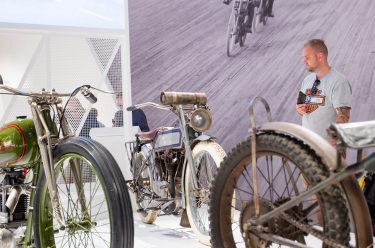Design innovation has been closely associated with the motorcycle for most of its 150-year history. The earliest motorcycles, however, were not so much designed as built. Nonetheless, they embody characteristics that align with their countries of origin.
Functionally, motorcycle designs drew influence from a mode of personal transport they superceded: horses. British motorcycle design quickly evolved to place riders in an upright position that harked back to established horseriding traditions and encouraged a straight line from the shoulders through the seat and ankles. Across the Atlantic, horseriding was a more casual affair involving a laid-back posture, with feet thrust forward and neck reined in. American engineers designed their motorcycles according to this precedent, instigating a distinctly American style of riding suited to longer distances and the wide-open plains, exemplified by Harley-Davidson, Indian and Crocker motorcycles.
DELVE DEEPER: Browse a LIST OF MOTORCYCLES
RELATED: Read more about the bikes in ‘THE MOTORCYCLE’ exhibition
RELATED: Listen to the co-curators SELECTED HIGHLIGHT VIDEOS

Crocker Speedway 1934
Motorcycle designer Al Crocker’s first motorcycle was a speedway bike made by modifying an existing Indian 101 Scout. While mildly successful, the heavy motor weighed the bike down too much to be competitive. In 1932, Crocker went back to the drawing board and designed his own single-cylinder pushrod engine and motorcycle frame, giving birth to the famous Crocker Speedway. Despite huge success in races around the United States, the Crocker Speedway was only in production until 1935, when Al Crocker turned his attention to building V-twin engines.
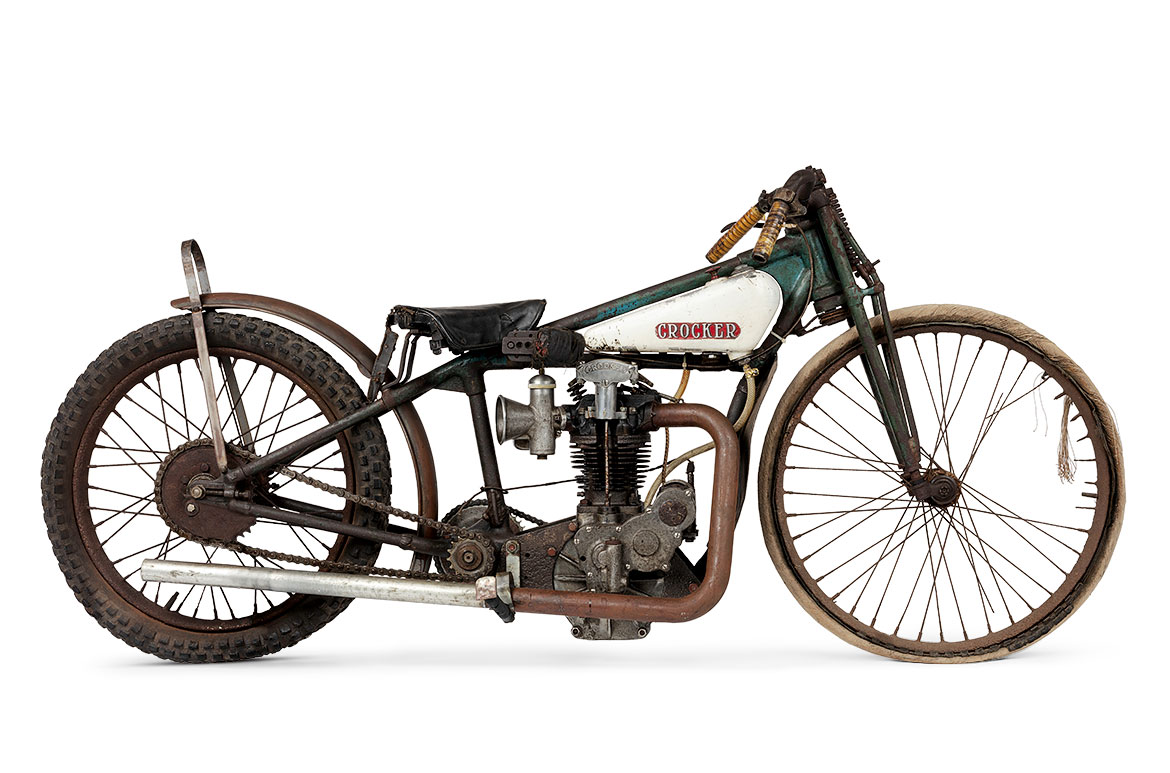
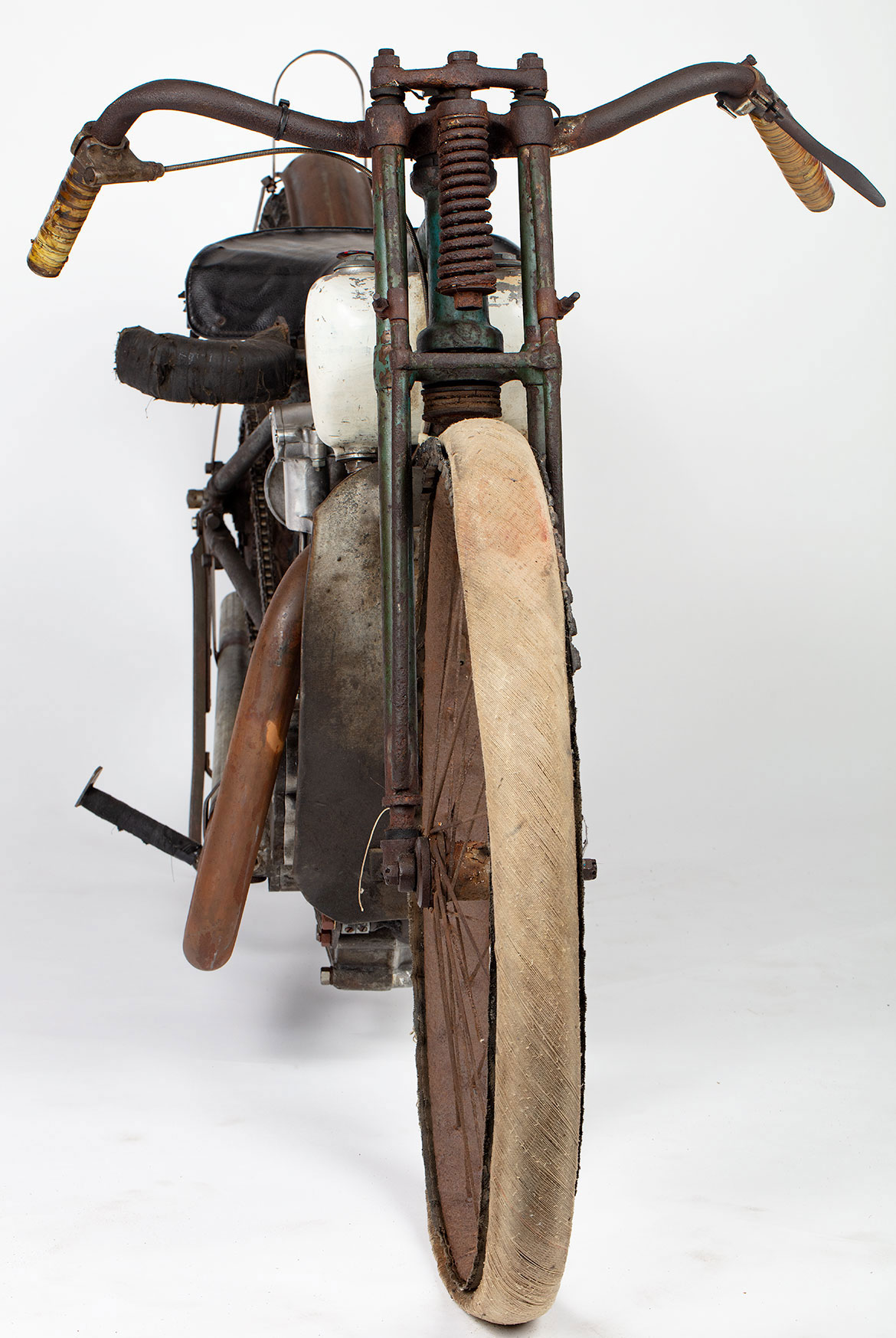
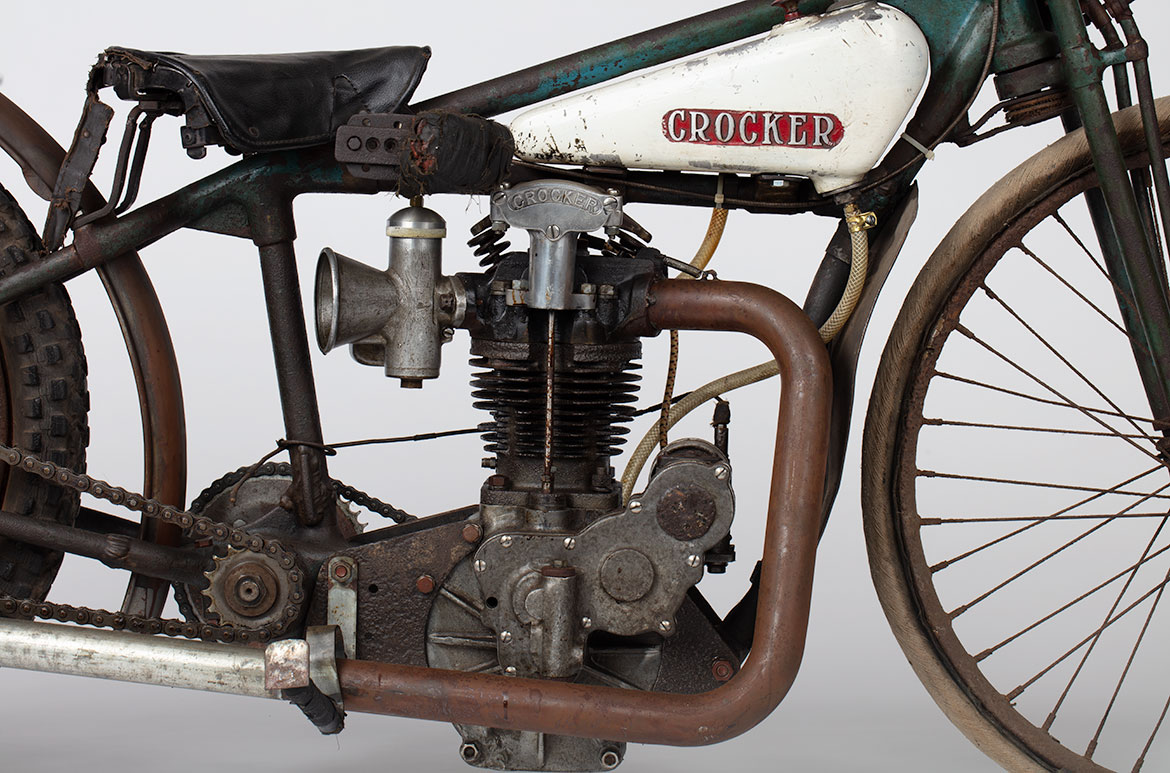
Specifications
Country: USA
Power: 40 hp
Engine: 493 cc OHV single
Designer: Albert G Crocker & Paul A Bigsby
Production: 1932-1936
Interesting facts
- Speedway is a motorsport involving four to six riders competing over four anticlockwise laps of a slippery dirt or crushed rock circuit. Speedway motorcycles have only one gear and no brakes, requiring the rider to expertly ‘powerslide’ around corners at high speed (as they say… no brakes, no gears, no fear). The sport got its start in Australia when riders used the loosely packed horseracing tracks and circuits, including the Brisbane and Sydney Showgrounds. The Australian Individual Speedway Championship is the longest running speedway race in the world, occurring annually since 1926.
- Speedway, known as dirt track in its heyday, was the most lucrative motor sport in the world in the early 1930s.
- Only 31 Crocker Speedway machines were made, and in recent years examples have attracted more than US$150 000 at auction.
- The Crocker Speedway caused a huge sensation from the time of its debut, winning nine first places and three second places in an evening race meet in Emeryville, California.
Brisbane, 1930

Sydney, 1946
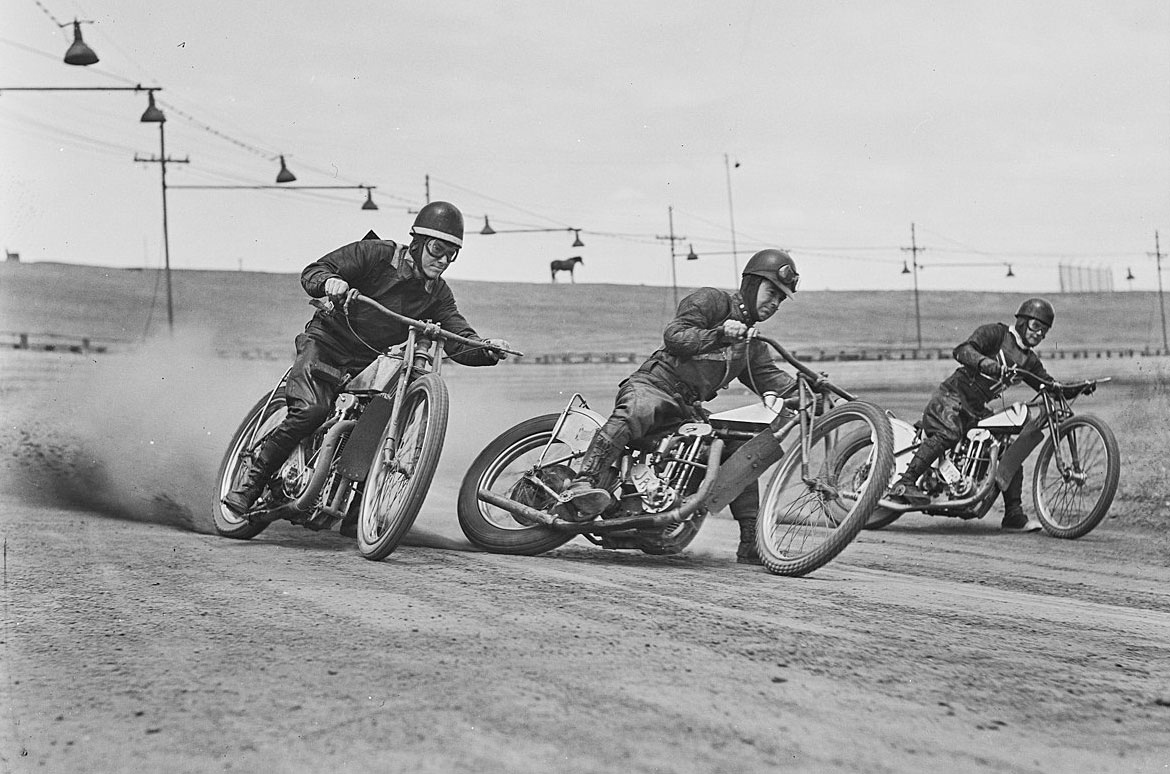
Brisbane, c.1954
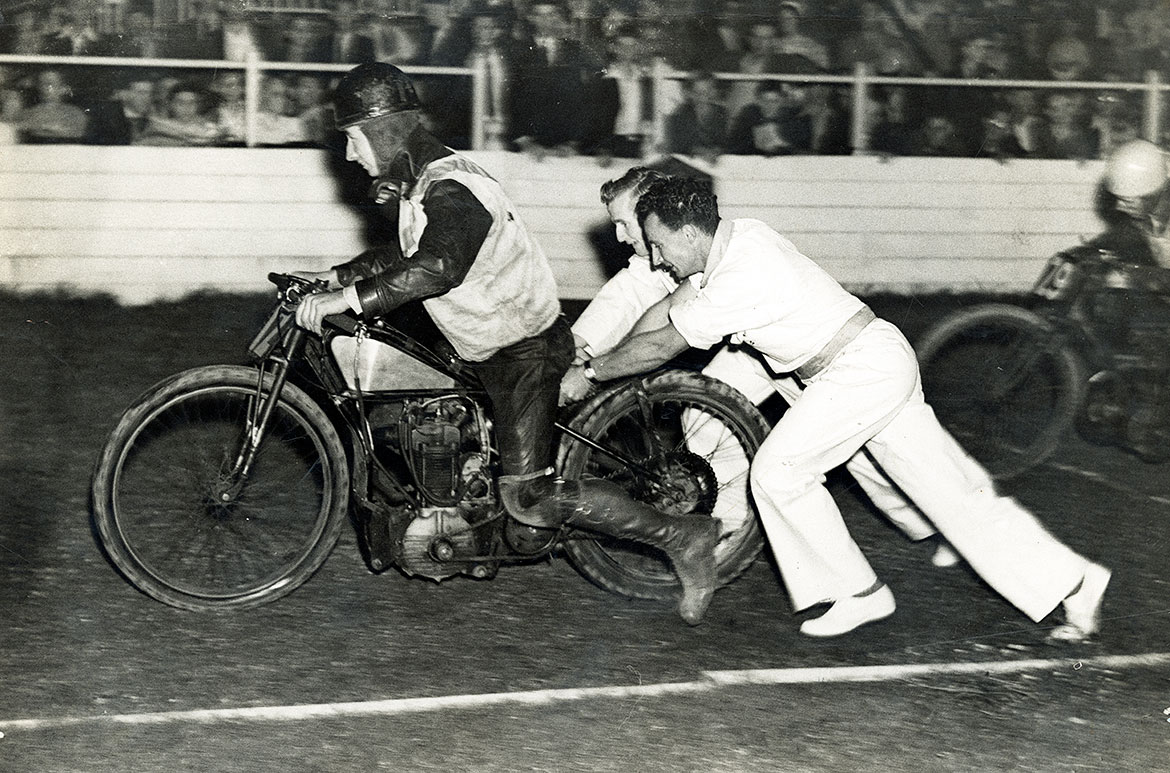
Crocker 1938
Built for speed and often referred to as ‘the Duesenberg of motorcycles’, the Crocker is an American classic. This handcrafted, limited-production sporting motorcycle was designed by Albert Crocker and Paul ‘PA’ Bigsby. The standard Crocker V-twin was the fastest production motorcycle in the United States for its era, and its engine could be tailored to meet each owner’s needs. The Crocker represents a milestone in motorcycle design and was the forerunner of the modern superbike.
AUSTRALIAN DESIGNED: Read about our LOCAL MOTORCYCLE HISTORY


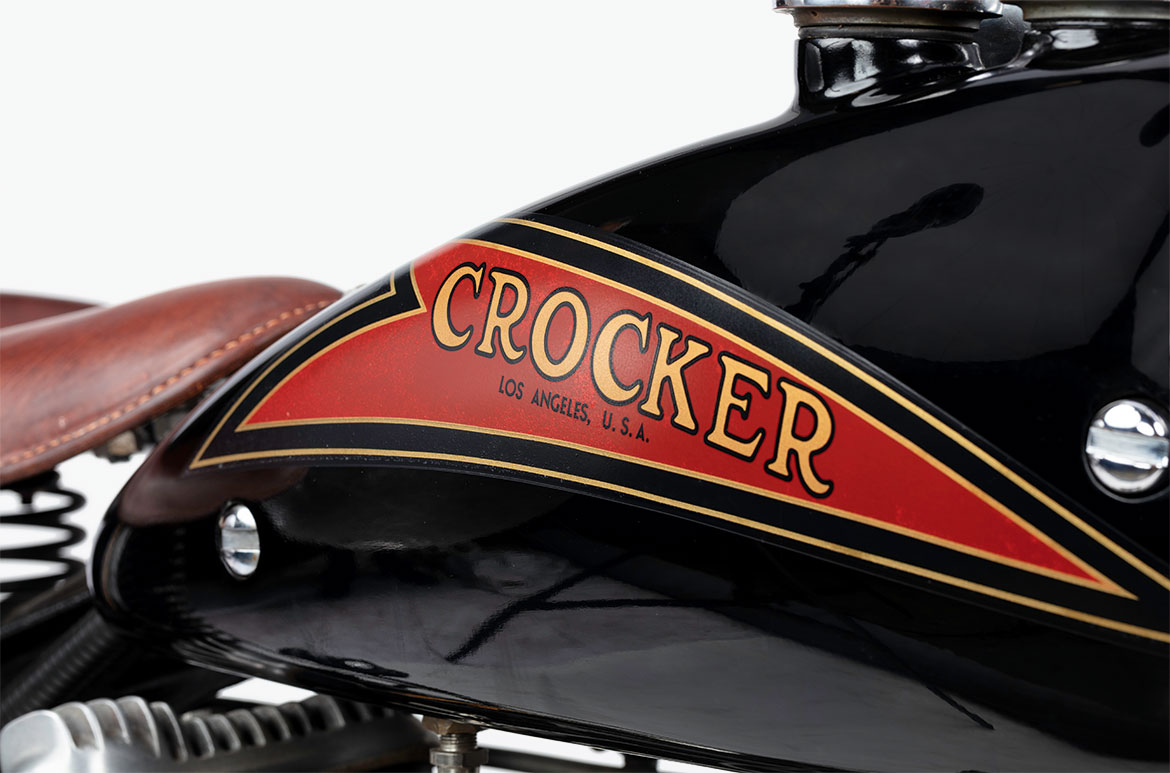
Specifications
Country: USA
Power: 51 hp
Engine: 986 cc OHV 45° V-twin
Designer: Albert G Crocker & Paul A Bigsby
Production: 1936-1942
Interesting facts
- A top speed of more than 180 km/h.
- Advertised with a money-back guarantee should any Crocker be beaten by a stock Indian or Harley-Davidson motorcycle.
- With around 70 V-twins originally produced, Crockers are extremely rare and highly collectable today, selling for hundreds of thousands of dollars at auction.
- Restrictions placed on supplies as a result of America’s World War Two ‘war effort’ brought production of Crocker motorcycles to a close in 1942. Designer Paul ‘PA’ Bigsby would later become famous for inventing the ‘Whammy Bar’, or tremolo, for electric guitars used by greats such as Jimi Hendrix and Eddie Van Halen.

View ‘The Motorcycle’ exhibition
Watch our installation time-lapse
Read more about Motorcycles / Subscribe to QAGOMA YouTube to go behind-the-scenes
‘The Motorcycle: Design, Art, Desire’ exhibition was in Brisbane’s Gallery of Modern Art (GOMA) from 28 November 2020 until 26 April 2021.
Show off your ride with #MotorcycleGOMA #QAGOMA
